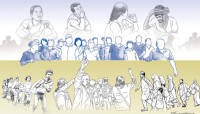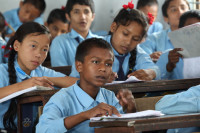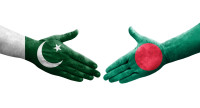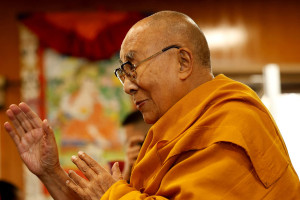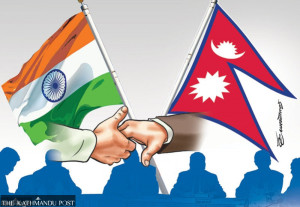Columns
Patterns of silence
The 16 Days of Activism remind us that GBV recognises no borders.
Van Nguyen
Seventeen-year-old Sana Yousaf never imagined that the harmless videos she posted online would one day become evidence in the investigation of her own murder. What began as routine trolling escalated into threats that followed her off the screen and into her real life. Her story shocked the country not because it was rare, but because it reflects an increasingly common reality.
Every year, the 16 Days of Activism remind us that gender-based violence recognises no borders. It is an epidemic that seeps into households, workplaces, and digital spaces, silencing women who are told to endure rather than speak. As a Vietnamese woman working in Pakistan, I have come to see how our different history and culture can produce similar patterns of silence. Geography changes; the barriers do not.
In 2024, the National Cyber Crime Investigation Agency received 135,000 complaints, yet only 826 reached prosecutions. A success rate of 0.6 per cent tells us everything we need to know: survivors are navigating a system not built for them. Many must travel long distances to one of only 15 cybercrime police stations, often borrowing devices from male relatives to file a complaint. The process is so difficult that many give up long before they begin.
Pakistan has made meaningful efforts. Legislation exists, crisis centres are operational, and helplines are expanding. But these protections remain fragmented and inconsistently implemented. A predictable result: underreporting continues, accountability remains rare, and cycles of violence endure.
Last year, public conversations on digital violence made one thing crystal clear: Pakistan’s systems were built for an offline era. They are not equipped to respond when harm spreads instantaneously, anonymously, and permanently.
With UNDP’s support, the Ministry of Human Rights developed Pakistan’s first national strategy to address Technology-Facilitated Gender-Based Violence (TFGBV). Co-created with survivors, legislators, and digital rights experts, it anchors accountability where it belongs. A central reform is the introduction of a 24-hour takedown requirement, overseen by a new Social Media Protection and Regulatory Authority. With Meta responding to 75pc of law-enforcement requests, TikTok 16pc, and X none at all, voluntary cooperation is no longer enough.
The strategy also recognises that harm is shaped by context. The 2012 Kohistan case, where a video of veiled women clapping led to murders, exposed the disconnect between global moderation standards and local realities.
These failures have consequences. Women censor themselves or vanish from online spaces. Digital abuse limits mobility, expression, and economic opportunity. Visibility becomes a risk, not a right.
Growing up in Vietnam, I saw how violence was dismissed as a ‘private matter’, something best handled behind closed doors. That silence is not unique to my country. In Pakistan, the stories differ, but the enabling structures — stigma and normalisation of harm — remain painfully familiar.
The strategy aims to break this pattern through four pillars: prevention, protection, accountability and survivor support. One critical reform closes the ‘blackmail loophole’, recognising that the threat to leak intimate images is itself an act of violence. The strategy also confronts the rise of AI-generated sexual imagery. With 95pc of deepfake content targeting women, stronger forensic capability and platform regulation are a must.
Pakistan’s digital transformation is accelerating. Eight million women came online in 2024, yet their participation remains fragile. Without structural protection, digital inclusion becomes conditional on a woman’s capacity to endure abuse.
By introducing this strategy, Pak-istan positions itself among the first in South Asia to present a coordinated, forward-looking response to online gender-based violence — shifting from documenting harm to preventing it.
But laws alone will not end this. Whether progress holds depends on what each of us — platforms, policymakers, families, and citizens — chooses to do next. Women are not asking for perfection; only protection, dignity, and the freedom to participate without fear.
I am often asked what drives me to this work.
My motivation is deeply personal. Every woman I know — friends, colleagues, family — has either survived violence or knows someone who has. I am no exception. This universality is what makes the issue impossible to ignore. When you realise that half of humanity bears the burden of fear, you understand that the fight is not a women’s issue — it is a societal one.
The screens are not going away. The violence should.
-Dawn (Pakistan)/ANN




 12.12°C Kathmandu
12.12°C Kathmandu


